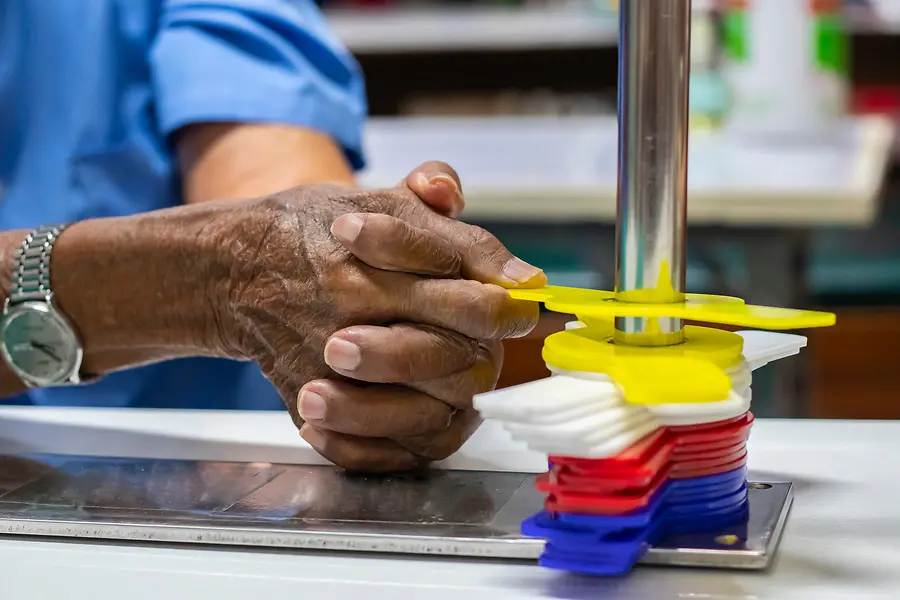From Therapist to Author
From Clinical Practice to Creative Healing: How One Occupational Therapist is Transforming Lives Through Origami.

For more than 12 years, I have served as a Certified Occupational Therapy Assistant across multiple settings — from skilled nursing facilities to home health to outpatient programs housed within SNFs. Throughout my career, I’ve worked with diverse populations and complex diagnoses, including stroke survivors, individuals with traumatic brain injuries, and patients navigating musculoskeletal conditions.
This journey has been deeply rewarding, shaping not only my clinical expertise but also the creative path my life has taken today.
Building Expertise Across Multiple Settings
One of the most transformative aspects of my career has been working in environments that challenged me to think critically and adapt quickly. In skilled nursing, I learned how to support patients during some of the most vulnerable chapters of their lives. Home health offered a deeper understanding of functional independence and the environmental adaptations needed to help people thrive in their own spaces. Outpatient rehab strengthened my clinical reasoning and refined my hands-on skills.
Over the years, I became especially passionate about neurological rehabilitation. Stroke recovery, cognitive retraining, post-TBI interventions, and addressing motor deficits became areas where I naturally excelled. Helping someone regain function — whether it’s brushing their hair again or writing their name — never stopped being meaningful.
In 2017, I expanded my skill set by becoming certified in kinesiotaping, which allowed me to better support patients with biomechanical and neuromuscular challenges. This additional training enhanced my understanding of the mind–body connection and deepened my ability to treat the whole person, not just the symptoms.
Becoming a Travel Therapist: Growth Through Courage and Curiosity
After several years in my hometown of Jacksonville, Florida, I felt called to grow beyond my comfort zone. I wanted to learn from practitioners across the country, gain new perspectives, and challenge myself in unfamiliar environments.
That decision took me all the way to California as a travel Certified Occupational Therapy Assistant — a leap of faith that was equal parts intimidating and exhilarating.
Travel therapy exposed me to new treatment approaches, diverse cultural influences, and a broader understanding of patient-centered care. Each assignment sharpened my clinical lens and helped me grow not only as a therapist, but as a person.
Even when my journey was interrupted by an on-the-job injury — just before reaching the full 13-year mark — my commitment to the field never faded. I continued seeking ways to use my experience, knowledge, and passion to help others.
Where Therapy Met Creativity: Becoming an Author
About a year ago, I opened a new chapter in my life — literally. I wrote and published my first book, Origami Tales, a whimsical storytelling experience centered around origami characters, life lessons, and imagination.
At first, it was simply a fun, creative project inspired by an activity I’ve loved since childhood. But as I reflected more deeply, I realized something meaningful:
Origami could become a therapeutic tool.
This realization inspired me to merge my two worlds — occupational therapy and creative storytelling.
Integrating Evidence-Based Practice With Origami
I am now developing an evidence-based supportive article and a full activity workbook to accompany Origami Tales. The workbook will include:
- Word-finding exercises
- Color-by-number pages
- Word scrambles and sequencing tasks
- Fine motor origami instructions
- Visual-perceptual and cognitive activities
These tools are designed not only for children working on foundational cognitive and fine motor skills, but also for older adults — especially individuals recovering from neurological events such as stroke or TBI.
Origami naturally incorporates:
- Bilateral coordination
- Visual-motor integration
- Following multi-step directions
- Attention and executive functioning
- Memory and problem-solving
- Creativity and self-expression
It is the perfect bridge between “play” and function — a therapeutic activity that can be adapted across ages, goals, and diagnoses.
Why This Work Matters to Me
This project is more than a book or a workbook. It represents the merging of who I was as a child, who I became as a therapist, and who I’m still becoming as an author and creator.
I have spent over a decade helping people regain independence, rediscover confidence, and reconnect with their abilities. Now, I’m excited to bring that same heart and purpose to tools that blend creativity, evidence-based practice, and therapeutic intention.
My goal is simple:
To share joy, support cognitive and motor development, and help people — from children to older adults — experience growth through creativity.
This next chapter of my career may look different from how it began, but the mission remains the same:
helping people heal, learn, and thrive in ways that feel meaningful and empowering.


